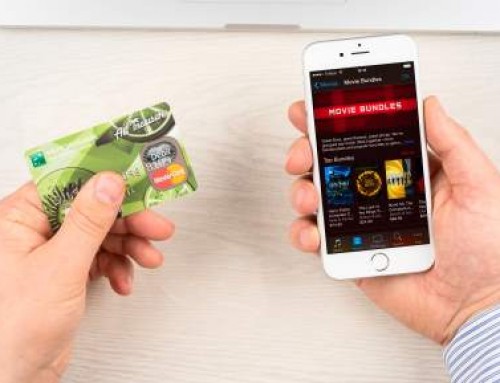It’s been four years since Deloitte published its landmark study, Digital disruption: Short fuse, big bang?, looking at the impact of digital innovation across all industries, and predicting how much change could be expected in the years to come.
Since this time, digital disruption has of course become commonplace. Every single industry faces digital disruption, and even the disruptors get disrupted.
Not just about technology
The difference between emerging stronger or losing all relevancy, is figuring out how you’ll be impacted and crafting your response accordingly.
Look at an industrial behemoth like GE which is boldly disrupting itself. The company has already siphoned off its financial services arm, and it’s getting out of consumer appliances to focus on its industrial core, healthcare, and renewables.
The company has more than 36,000 jet engines in service around the world, with plans to add another 10,000 by 2020. But even in the aviation industry, GE is selling off assets. For this company it’s no longer about owning assets, it’s about the data around them.

Strategy to increase milk shake sales by Prof. Clayton Christensen (Harvard Business School)
How to deal with digital disruption
Field of vision
Indeed, data and insights are absolutely key for any sized business to drive future direction.
While SMEs are typically able to pivot and respond to change quickly without the impediments of legacy systems, large organisations typically have the access to more points of data from which to drive their decision making.
Without this data, for owners and managers of small and medium sized businesses, it’s often about gut feel.
Unfortunately, too many businesses take a limited view as to what digital transformation means. And while they can tick off their website and mobile apps, they haven’t aligned technology with the business vision.
Sharpen up your offer
Of course, to know what your customers want, you’ve really got to know what your customers want. And by this I mean you have to look at – and interpret – what customers do, not simply listen to what they say.
In his MBA course, Harvard Business School professor Clayton Christensen, illustrates this point beautifully with the story of a fast food chain in the US that wanted to increase milkshake sales.
Close observation
Through interviews, they asked their customers to describe an ideal milkshake, and responded according. But even with the ideal milkshake on their menu, there was no improvement in sales.
But through observation they discovered they had two main groups of customers. About 40% of their milkshakes were purchased first thing in the morning by commuters, while in the afternoons, busy mums brought along their kids for an after school treat.
In terms of the morning commuters, these people:
- Were dressed in business attire
- Faced at least an hour-long and somewhat tedious trip
- Had only one hand free
- Bought the milkshake because it was a relatively non-messy way to curb their appetite on the go.
Interestingly, slurping a thick milkshake through a thin straw also gave the commuters something to do on their boring journey into work.

Know your customers
Understanding the power of this insight, the team at the fast food chain responded by creating a morning milkshake menu of even thicker, fruiter shakes that would take the entire trip to consume.
Of course, for the harried mums with kids, the slow-slurp milkshake just wouldn’t work. They needed something entirely different. Something altogether quicker to drink with no mess. A different viscosity and something the children could enjoy without needing half an hour to slurp the milkshake through the straw.
Deep insights
The fast food chain couldn’t have created these insights from customer segmentation alone. So, whereas customer segmentation is important, you can see why you’ve got to use your business data intelligently and observe customer behaviour up close. By digging deep for insights from your customers, you can use them to build better, more relevant, more resonant, and marketable products.
It’s all about knowing customers. Understanding their motivation for buying your product, and finessing your service on a real-time basis.
Embed digital
While the milkshake story is a great example of customer centric thinking, you also need to expand your field of vision and work out how your products and services fit within a digital or mobile first framework.
Even something as offline as a milkshake needs a digital strategy.
You don’t even need a digital product per se to exploit digital thinking to expand audience reach, increase speed to market, reduce costs and improve the customer experience.
A better customer experience
As a case in point, a while back I was doing some heavy lifting in my garden at home and needed a trailer to take the vegetation to the tip. I checked the Kennards Hire website for a trailer, and then called them in advance to see if they had one available.
I then drove down to my local branch, spent about 20 minutes or so filling in forms, and then had to wait for someone to unlock the trailer and help me hook it up to my car.
I couldn’t help thinking there had to be a better way.
Click and collet
And of course there is, care of the click and collect scenario.
With a seamless online experience, I would be able to browse, select, book and pay for the trailer online.
Then all I’d have to do is I scoot down to my local branch at the appointed time, and have the trailer hooked up to the back of my car and I’m out of there in next to no time.
Since my trailer hiring experience, I’ve seen that Kennards has launched a new beta site which fulfils much of the above (which is great to see although I can’t claim any involvement).
Key learning
For any business owner or manager, it’s incredibly difficult to walk away from a tried and tested way of doing things that has brought you great success in the past.
But it’s absolutely critical – not a nice to have – to work out how best to embed digital into your business in order to gear up for success in the future.
If you’re still waiting for your business or industry to be disrupted, you won’t have to wait long. With digital disruption, it’s not a question of if, but when.
Developing an appropriate response is the number one medium term challenge facing businesses today. And for this, you need insights. As a starting point make sure you:
- Closely observe your customers
- Use the data you have available and think what more you need and how to source it
- Keep up-to-date with industry trends
- Attend industry events and forums, and
- Become active in your stakeholder ecosystem.






